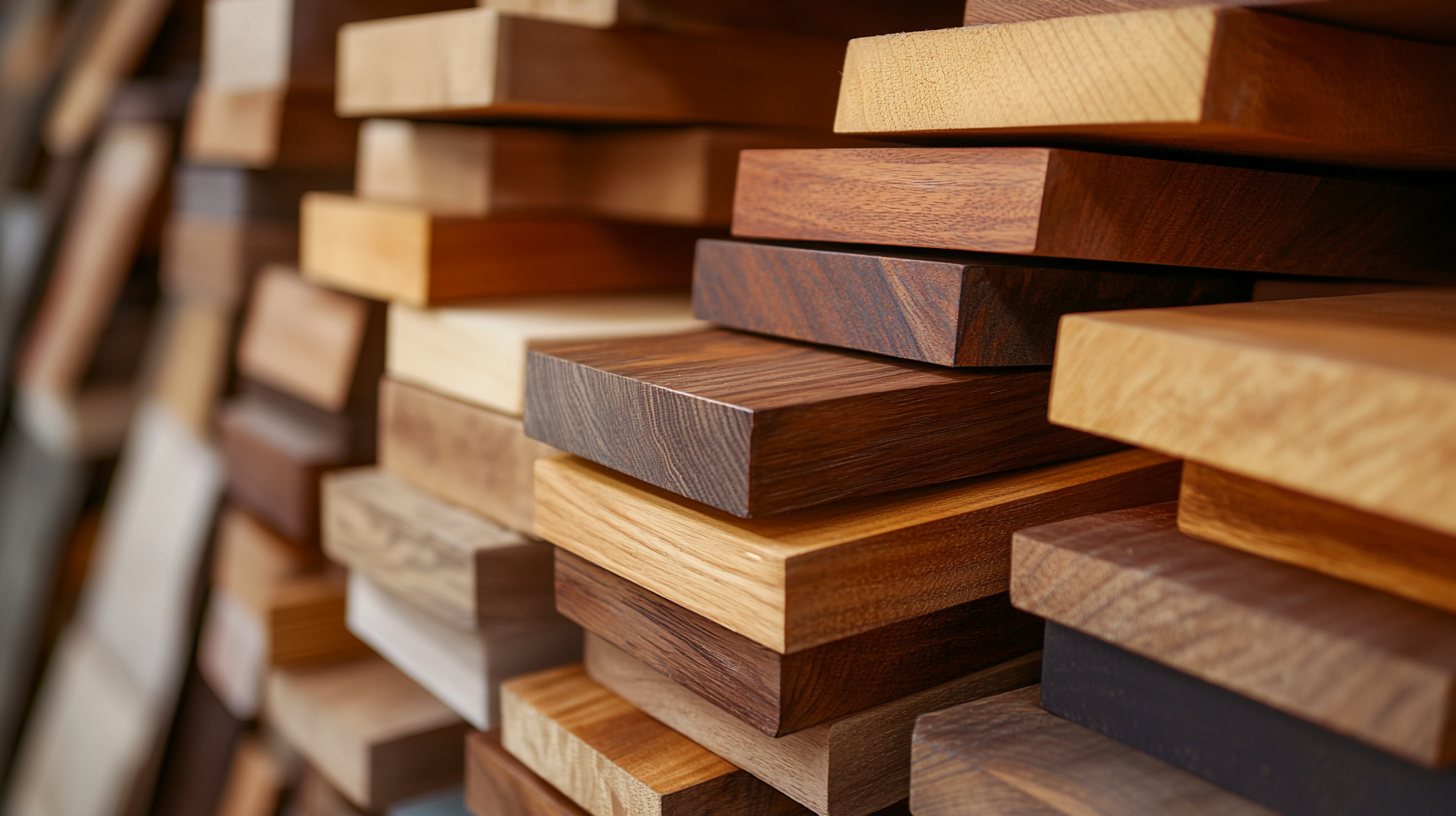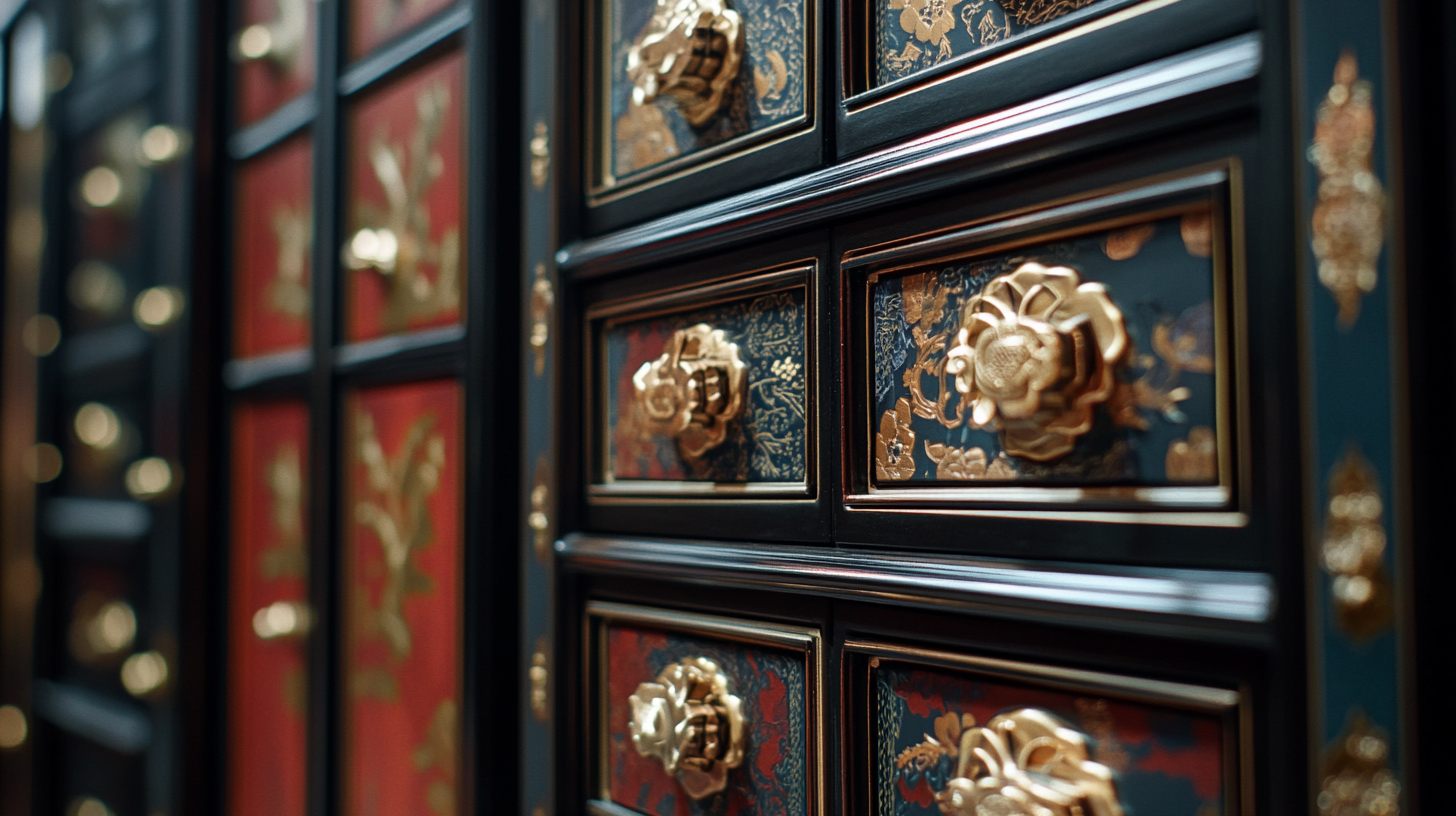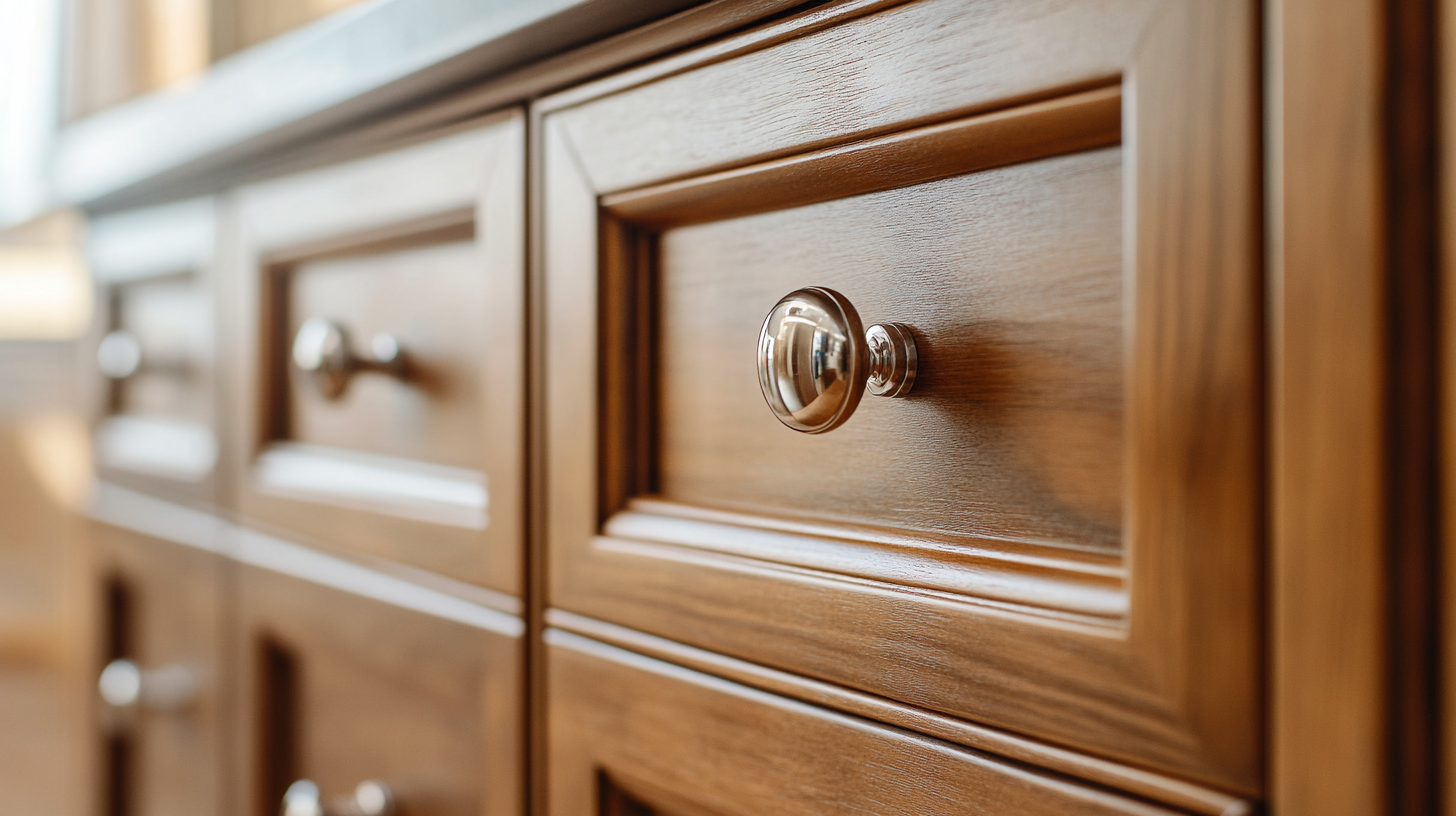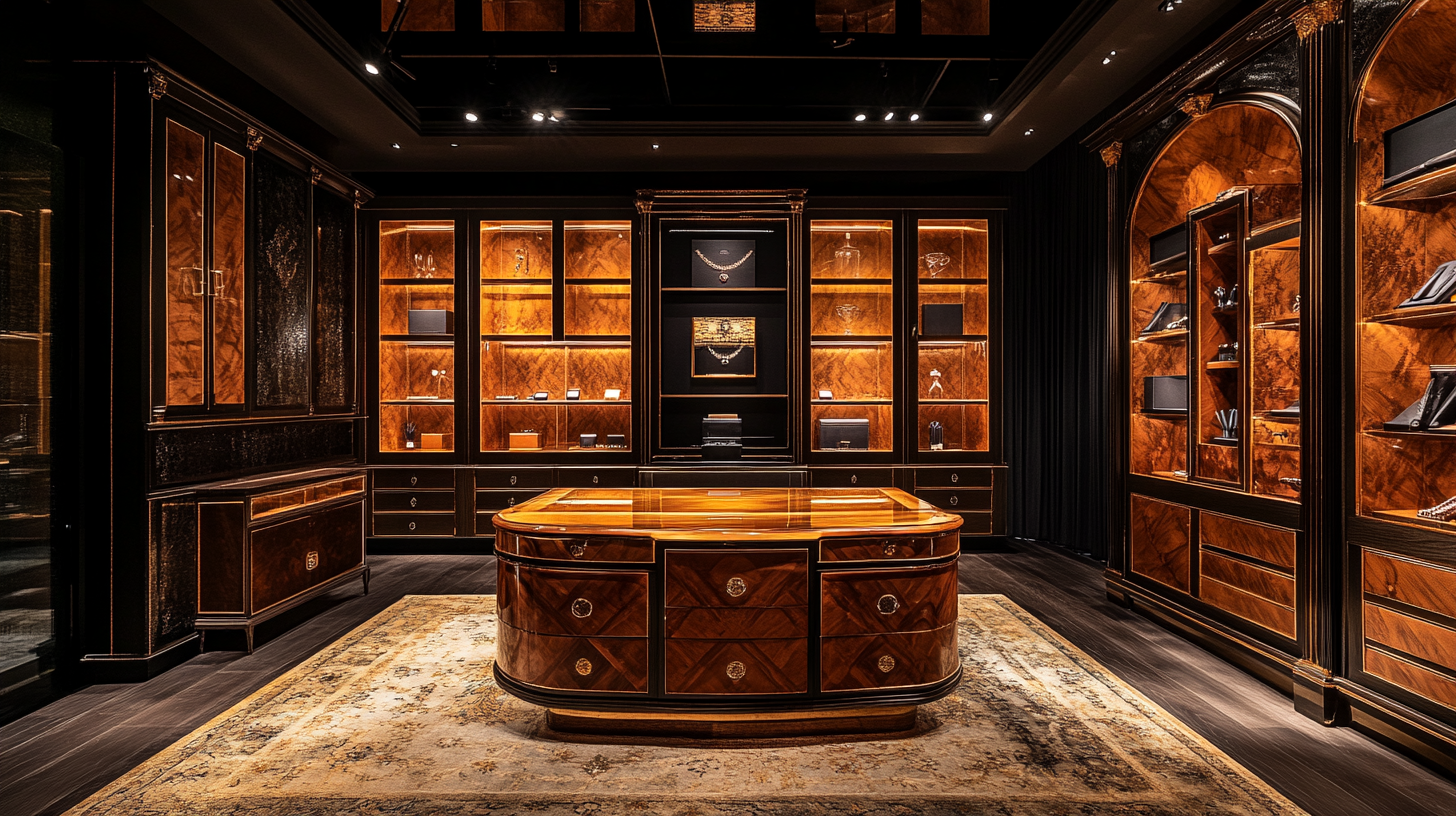As we look ahead to 2025, the landscape of interior design is increasingly shaped by consumer preferences for personalized solutions, with Custom Made Cabinets leading the charge. According to a recent report by MarketsandMarkets, the custom cabinetry market is projected to reach $13.74 billion by 2025, reflecting a compound annual growth rate (CAGR) of 4.9% from 2020 to 2025. This shift towards bespoke cabinetry not only highlights an evolving demand for uniqueness but also reveals a growing trend in prioritizing quality, craftsmanship, and sustainability as consumers become more discerning in their choices.
Global markets are embracing these changes, with significant disparities in trends and offerings across different regions. For instance, while North American consumers are gravitating towards modern, minimalist designs, European markets often prioritize artisanal craftsmanship and vintage aesthetics. In Asia, there's a rising interest in integrating smart technology within custom cabinetry solutions, showcasing how cultural nuances influence preferences. As we explore the emerging trends in Custom Made Cabinets for 2025, a comprehensive understanding of these global market dynamics will be essential for manufacturers and designers aiming to capture the interests of a diverse clientele.

As we look toward 2025, the landscape of custom-made cabinets is set to transform dramatically, driven by sustainability and innovation in materials. Homeowners and designers alike are increasingly prioritizing eco-friendly options that minimize environmental impact while delivering aesthetic appeal and functionality. Emerging materials such as reclaimed wood, bamboo, and recycled composites are becoming prominent choices, allowing for beautiful designs that tell a story of their origin and purpose. Bamboo, in particular, stands out as a sustainable alternative due to its rapid growth and renewability. It offers strength comparable to hardwood, yet its lightweight nature makes it an ideal choice for modern cabinet designs that require both durability and ease of installation. Furthermore, advancements in the treatment of bamboo allow it to take on various finishes, ensuring it can seamlessly fit into diverse interior styles. Recycled materials are also gaining traction, with manufacturers incorporating items such as recycled plastics and metals into their cabinet designs. These materials not only reduce waste in landfills but also provide unique textures and colors that enhance a space's character. The innovation in processing these materials allows for customized solutions that cater to individual tastes while reflecting a commitment to sustainability. As we approach 2025, the integration of these emerging materials will undoubtedly set new standards in the custom cabinet industry, transforming homes globally while promoting an environmentally responsible ethos.

The influence of global cultures on design aesthetics is profoundly shaping the trends in custom made cabinets for 2025. As we move towards a more interconnected world, the exchange of ideas and traditions has led to a richer diversity in cabinet designs. For instance, Scandinavian minimalism, characterized by clean lines and functionality, is gaining traction across North America and Asia. This style emphasizes natural materials and a light color palette, reflecting a shift towards simplicity and sustainability that resonates with modern homeowners.
In contrast, the bold colors and intricate patterns typical of Moroccan design are experiencing a revival. These vibrant aesthetics are appealing to consumers looking to make a statement in their kitchens and living spaces. With a focus on craftsmanship and artisanal details, these cabinets not only serve practical purposes but also tell a story of cultural heritage. This trend showcases how cultural narratives can be woven into home design, creating spaces that reflect personal identity and global influences.
Meanwhile, the rise of biophilic design is another trend that marries nature with aesthetics, drawing on various cultural concepts of harmony with the environment. Cabinets that incorporate natural materials and organic shapes are becoming popular, as they evoke tranquility and connection to the outdoors. This movement illustrates how different global perspectives on nature can lead to innovative cabinet designs that prioritize well-being and sustainability, setting the stage for a dynamic and culturally rich market in 2025.

Smart technology is revolutionizing the way we think about custom-made cabinets, and by 2025, we can expect to see an even greater integration of smart features. From voice-activated controls to automated lighting systems, the future of custom cabinetry will be defined by its ability to enhance functionality while providing a seamless user experience. Homeowners will increasingly demand cabinets that not only store their belongings but also adapt to their lifestyle, thanks to smart technology.
In global markets, the incorporation of technology into cabinetry is already a hot trend. In Europe, for instance, manufacturers are leading the charge with products that offer built-in sensors to monitor temperature and humidity, ensuring that delicate items are stored in optimal conditions. Meanwhile, in the U.S., brands are focusing on user-friendly interfaces that allow homeowners to control their cabinets through smartphone apps. This trend of connectivity and customization reflects a growing desire for home solutions that are both aesthetically pleasing and technologically advanced.
The integration of smart technology in custom cabinets is not just about utility; it also plays a significant role in sustainability. Smart cabinets can track usage patterns, alerting homeowners when items are running low and suggesting timely replacements, ultimately reducing waste. As consumers become more eco-conscious, brands that can combine luxury with responsible design will thrive in this competitive landscape. As we approach 2025, the marriage of smart technology and custom cabinetry will undoubtedly shape the future of interior design, making spaces more intuitive and responsive to individual needs.

As we look towards 2025, the custom cabinet market is witnessing a significant transformation, driven by regional preferences that highlight diverse styles and functionalities. Global markets exhibit distinct trends influenced by cultural tastes, economic factors, and consumer behavior. For instance, in North America, the demand for modern minimalist designs with clean lines is on the rise, while in Europe, there is a strong inclination towards traditional craftsmanship and sustainable materials.
Materials play a crucial role in defining these regional preferences. Wood remains a timeless choice for many, celebrated for its durability and aesthetic appeal. However, composite materials and metals are gaining traction, particularly in urban areas where space optimization is essential. The growing interest in eco-friendly options has also led to increased use of recycled materials, reflecting a broader trend towards sustainability in the furniture industry.
Moreover, the cabinet categories are evolving as well. Stock cabinets are popular for their affordability and availability, while semi-custom and fully custom cabinets cater to those looking for personalized solutions. The latter is particularly appealing in markets where individuality and bespoke design are prioritized. As the lines between function and style continue to blur, understanding these regional influences will be key for brands aiming to capture a growing share of the competitive custom cabinet landscape.
As we look towards 2025, consumer preferences in the cabinetry market are shifting towards personalization, with trends varying significantly across different demographics. According to a 2023 report by the Home Improvement Research Institute, over 65% of consumers are now seeking custom-made solutions tailored specifically to their lifestyle needs. This trend is particularly prominent among Millennials and Gen Z, who prioritize unique designs that reflect their individual tastes and values.
Moreover, the demand for personalization in cabinetry transcends mere aesthetic choices. A study from the International Cabinet Manufacturers Association reveals that 71% of homeowners prefer functionality that aligns with their specific usage patterns, such as specialized storage solutions and multitasking features. This is especially relevant in urban areas, where space limitations drive the need for innovative storage options that maximize utility without compromising on style.
Cultural differences also play a crucial role in shaping these preferences. For instance, while North American consumers gravitate towards contemporary and minimalist designs, European markets often favor traditional craftsmanship and ornate details. Research indicates that 58% of European consumers are willing to pay a premium for custom cabinetry that embodies craftsmanship and heritage. This juxtaposition highlights the importance of understanding regional tastes and tailoring offerings accordingly.
As we move forward, manufacturers must adapt to these emerging trends, focusing on personalization as a core component of their product offerings. By embracing consumer insights and leveraging data analytics, they can create custom solutions that resonate with diverse demographics, ultimately driving growth in a competitive global market.
Whether you’re a homeowner, builder, or designer, you’ll find that our elegant cabinets create a breathtaking space that evokes positive emotions and encourages lasting memories. We invite you to explore our website to learn more about who we are and how we can help you.
Woodinville | Bellevue | Seattle | Kirkland | California | Berkeley | Walnut Creek | Roseville, CA
© 2025 Acadia Craft. Powered by Integrity Marketing Serving Woodinville, Kirkland, Bellevue & The Greater Seattle Area
